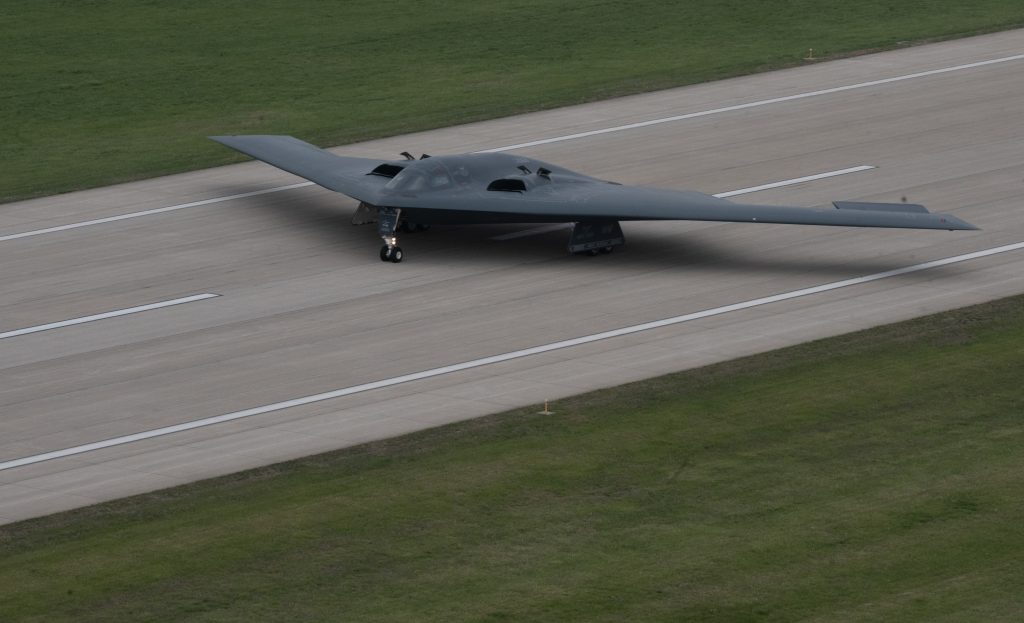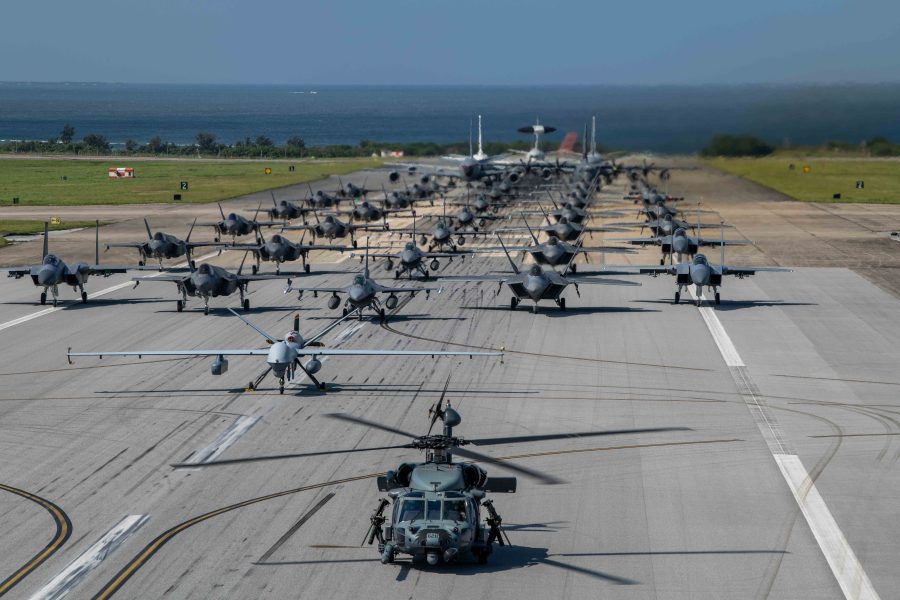At the dawn of the Cold War, a simple phrase defined America’s national security strategy: “Peace through strength.” Today, 75 years later, the world faces similarly severe challenges, but this time the United States is struggling to adopt and actualize a similarly decisive policy.
Witness the travails necessary to pass military aid for Ukraine, Israel, and Taiwan. The majority in Congress supported those measures, which were held hostage for months by small minorities from both ends of the political spectrum. America’s adversaries understand this power vacuum and take advantage daily. There comes a point where U.S. leaders must stop asking “what happens if we lead?” and instead ask “what happens if we don’t?”
After two decades of failed wars in Afghanistan and Iraq, Americans are understandably reluctant to engage in new conflicts around the world. They saw friends and neighbors deployed, endured thousands killed and wounded, and watched as national leaders struggled to define a viable strategy and a positive end state. The U.S. failed dramatically in both conflicts, with ISIS emerging after we left Iraq and the catastrophic withdrawal from Afghanistan serving as lasting evidence of that failure.
What is different now is the scale, scope and existential nature of the threats facing America today. Iraq and Afghanistan were regional contingencies, not major international conflicts. They did not tie to existential interests—the literal security of our nation, economic interests, core values, and the ability to engage in a free and peaceful world.
By contrast, Russia’s invasion of Ukraine, China’s continued aggression in the Pacific, Iran’s quest to dominate the Middle East, and North Korea’s obsession with expanding its offensive nuclear strike capabilities, each make the world unbelievably more dangerous day by day. America’s indecision regarding our role in global security only exacerbates these threats. Aggressors love a vacuum.
A better vector would see U.S. leaders revise the nation’s approach to Ukraine. Thus far, U.S. and allied policy has sought to provide sufficient aid to Ukraine to prevent it from losing ground day-to-day. But this focus on not losing, is a far cry from enabling Ukraine to win. By restricting Ukraine from using U.S.-made weapons to attack targets beyond its own borders, the U.S. has given Russia sanctuary in its territory and blocked Ukraine from making its invader feel pain at home. The result is World War I-style attrition warfare, and an inability to change the calculus of the war. Ukraine is restricted from attacking Russian command and control, logistics, materiel targets, and rear bases, and has ceded to Russia the upper hand it wields due to its greater size and numerical strength.
Advocates of this policy say it helps avoid dragging the U.S. and NATO into a broader fight with Russia, and reduces the risk that Vladimir Putin might unleash a nuclear attack. But they ignore the fact that deterrence is a multi-player game. Putin cannot be given free reign every time he rattles his nuclear saber. If he is, not only will he rattle it more, but Ukraine will surely lose.
The U.S. and its allies need to deter—not be deterred.
Similar patterns have occurred in the Pacific. Note how the U.S. failed to take a stand in the 2000s and 2010s as China seized territory and built military outposts on international reefs over the past 20 years. Now, those installations are fortified, and the situation is far more dangerous. Consider the violent standoff between Chinese and Philippine forces over a location in the Second Thomas Shoal. Such flashpoints risk erupting into open conflict—an outcome that poses outsized risks for the U.S. and much of the free world.
Meeting the aggression of adversaries with U.S. and allied appeasement is a recipe for a disaster. It is cliché to say so, but this is exactly how conditions were set for World War II.
The problem for the U.S. and most of its allies is that we are collectively underprepared for confronting these realities. We took a deliberate “defense holiday” following the Cold War—slashing military force structure and opting not to invest in military modernization. When the fights in Afghanistan and Iraq came a long, they distracted us from larger threats—and siphoned away valuable resources, time, and focus. Consider that at the end of the Cold War, the U.S. fielded roughly 400 bomber aircraft. Today, the Air Force has only about 141, and on any given day, only about 59 are capable of flying a military mission. Only 19 are stealthy B-2s—the type most needed to confront a competent adversary.
We face similar deficits in fighter, tanker, and airlift, and intelligence-gathering capacity. Our homeland is inadequately defended. Our new Space Force is also badly under resourced.

Many U.S. leaders seem neither to understand nor care. The 2023 Fiscal Responsibility Act limited the defense budget to 1 percent growth—a de facto cut given high inflation. Our entire nuclear triad has exceeded its anticipated lifespan and must be replaced. Without massive investment, these capabilities and their power to deter adversaries from risking war with the U.S. will wither away.
That is what is happening to the U.S. Air Force’s fighter inventory. F-15s and F-16s procured in the 1970s and 1980s are aging out of service. Though the Air Force has stated for years that it needs to buy at least 72 new fighter jets per year to modernize, we continue to acquire fewer jets each year, leaving gaps around the globe. That is why F-15s were withdrawn from Kadena Air Base in Japan last year—in the heart of the Pacific—and cannot be backfilled with permanently assigned fighters. That is the consequence of retiring more aircraft than we buy, year after year.
Interestingly, U.S. allies seem to get what is at stake and are making defense investments a key priority. The U.K. recently announced a new round of sustained investment, with British Prime Minister Rishi Sunak explaining “A victory for authoritarianism and aggression would make us all less secure.” Sweden, Japan, and Canada are all pursuing similar increases. While this is encouraging, America’s scale and stature is the keystone for any consequential security effort.
Many U.S. leaders know this, even as they struggle to convince colleagues. That is why Senate Minority Leader Mitch McConnel (R-KY) said passing aid for Ukraine, Israel, and Taiwan was “a skirmish in a larger war” against an isolationist wave in Congress and elsewhere in America. It is also why Senate Defense Appropriations Subcommittee Chairman John Tester (D-MT) pushed back on the defense caps in a recent hearing: “If we’re going to invest in future technologies, this number has to be bigger.”
After years of atrophy, progress in this fight cannot happen soon enough.
Those questioning whether America still needs to play a leading security role in the world need to consider the alternatives. Our nation may be far from perfect, but the freedoms we enjoy far outstrip those afforded to people in Russia, China, Iran and North Korea. Does anyone really think a wider Middle East at war is in U.S. interests? Do any Americans want a broader conflict in Europe? Or to see China dominating its neighbors in the Pacific?
Any one of these outcomes would prove catastrophic. Together, they would be world-changing, and not in a good way. America must draw clear lines, define viable strategies, and align military capability and capacity with real-world demand. Doing so can deter the worst instincts of our adversaries and preserve peace in the global commons.
Douglas A. Birkey is the executive director of the Mitchell Institute for Aerospace Studies.
